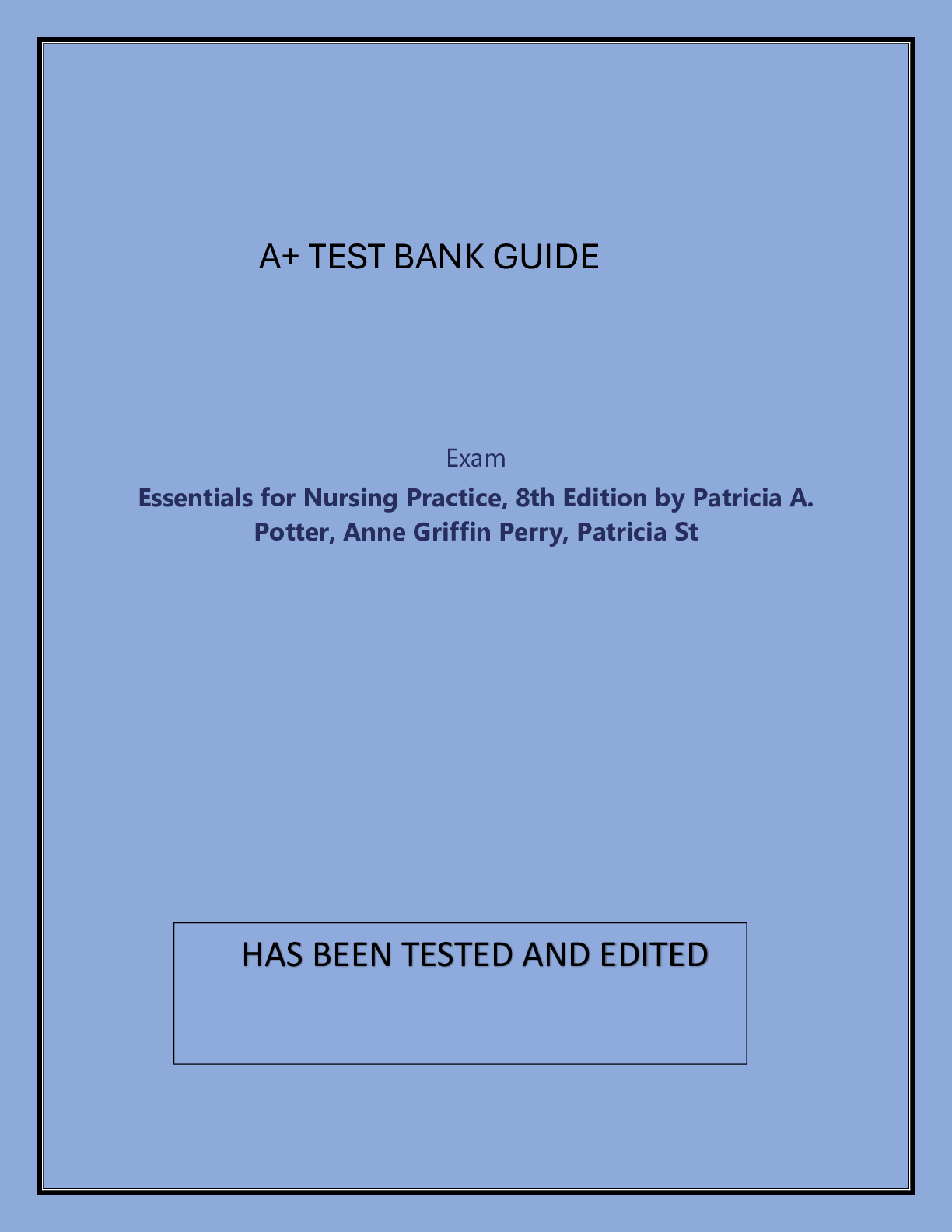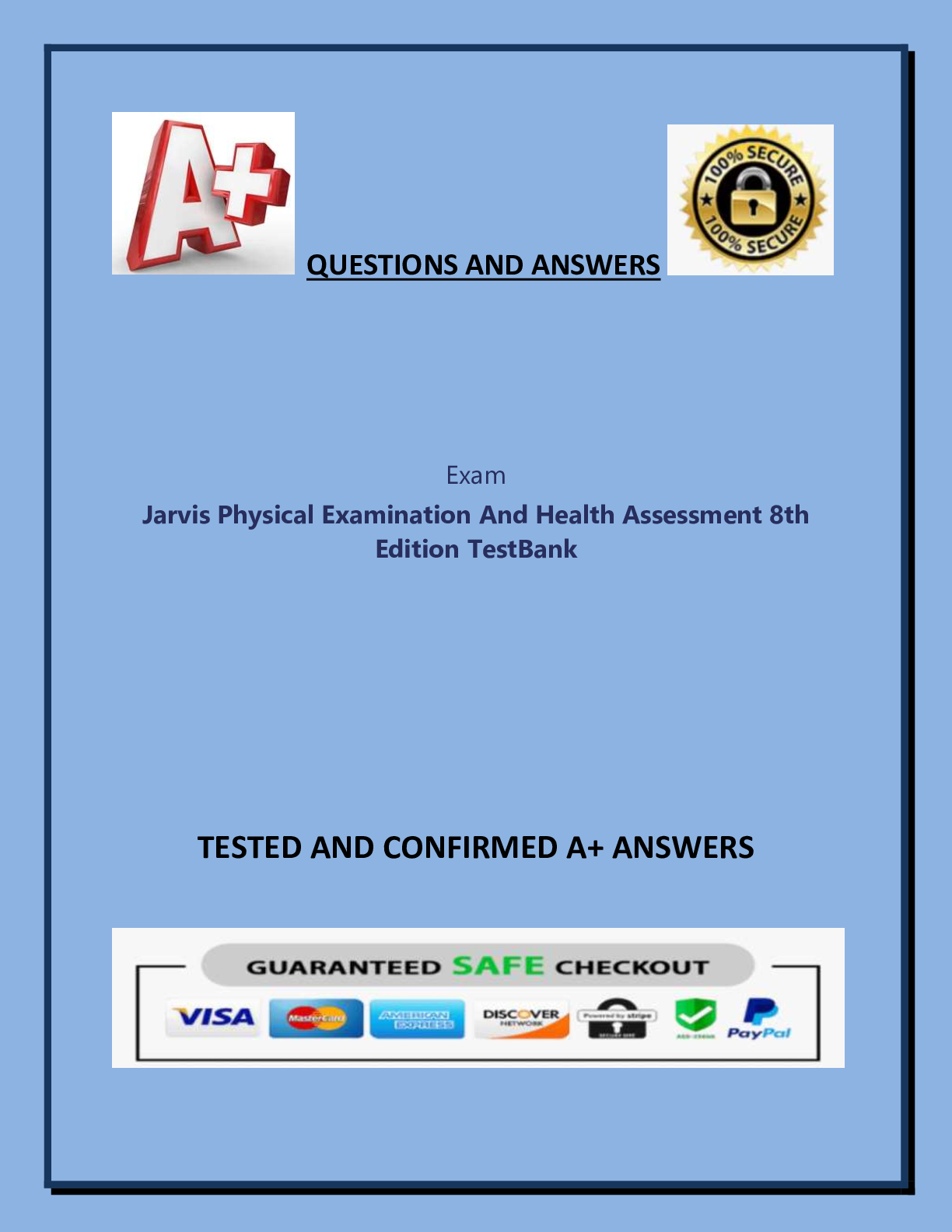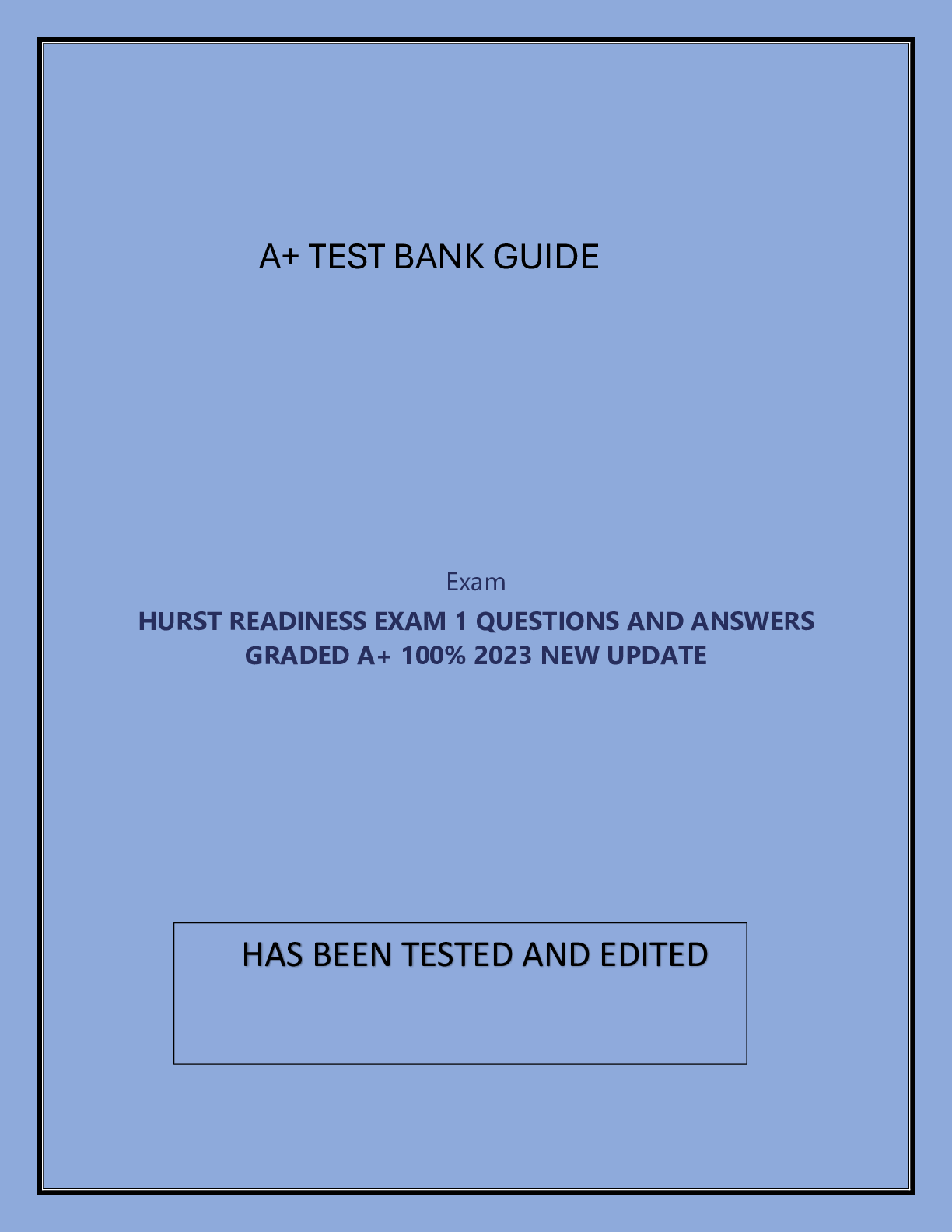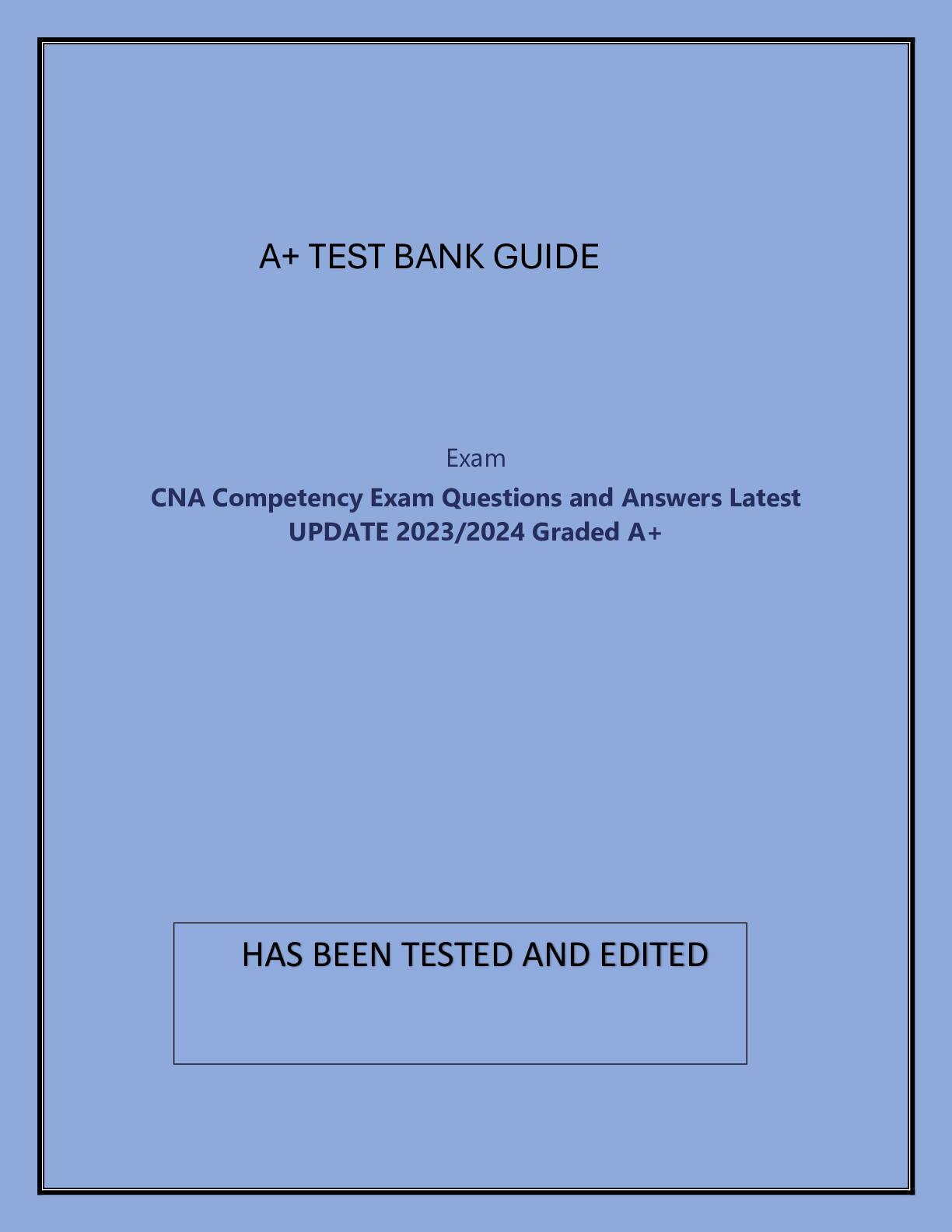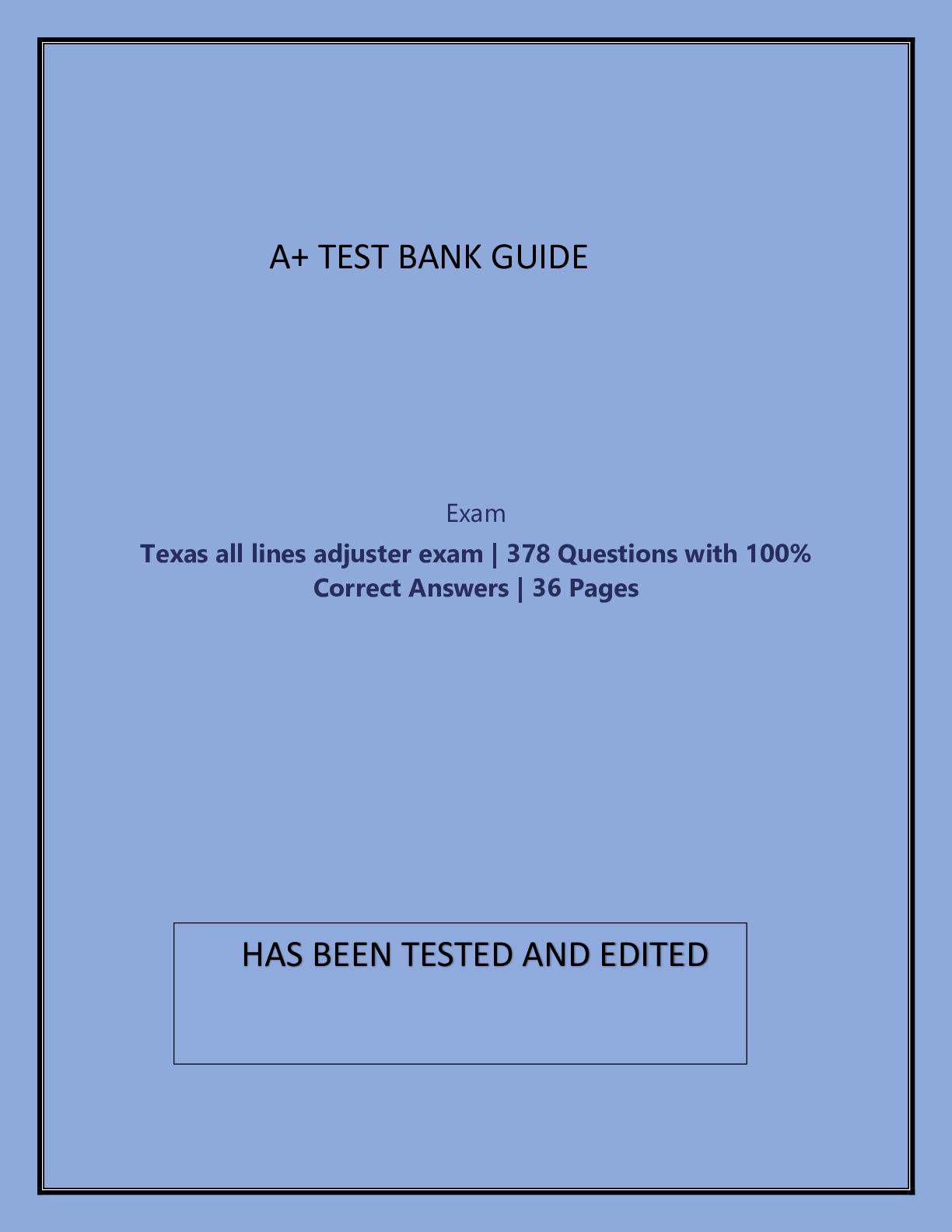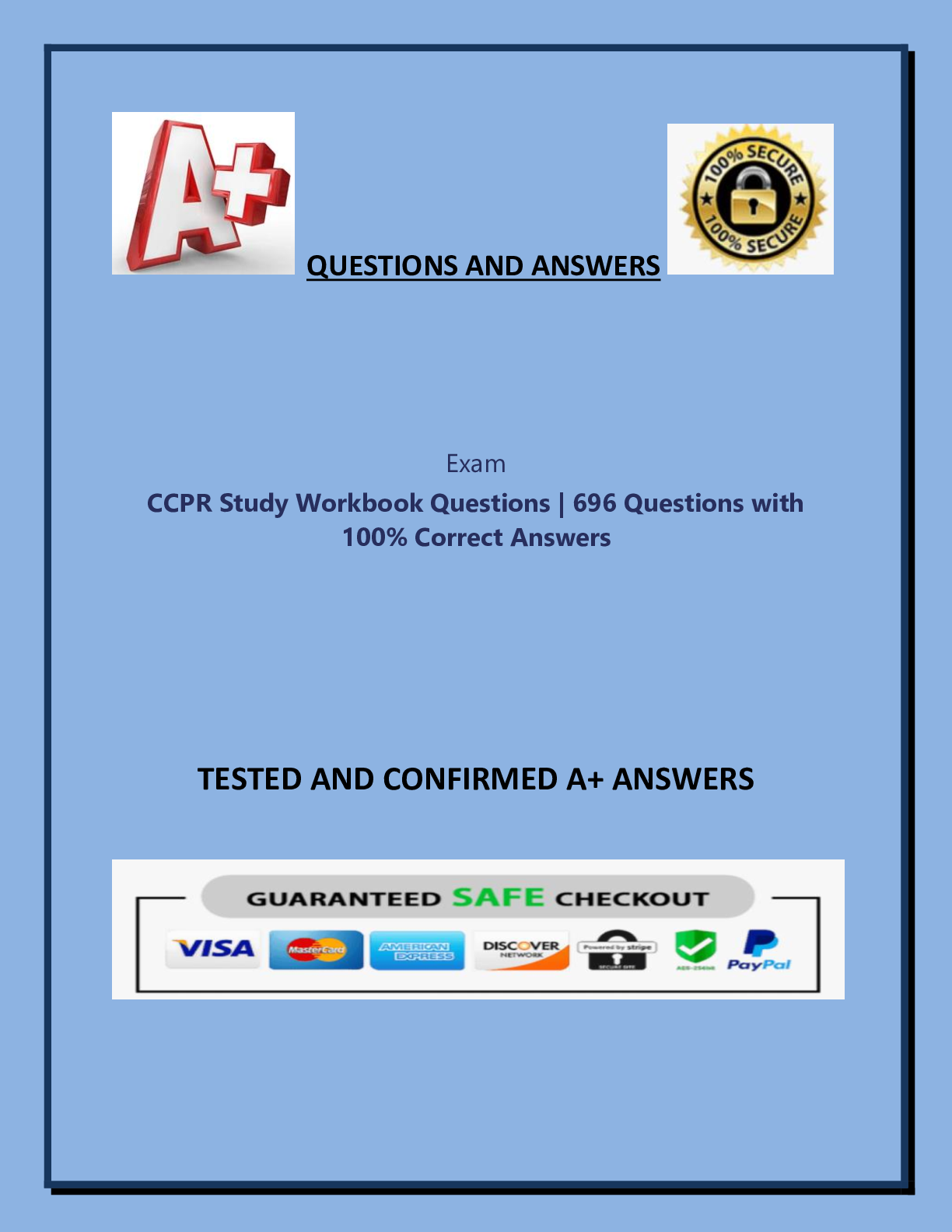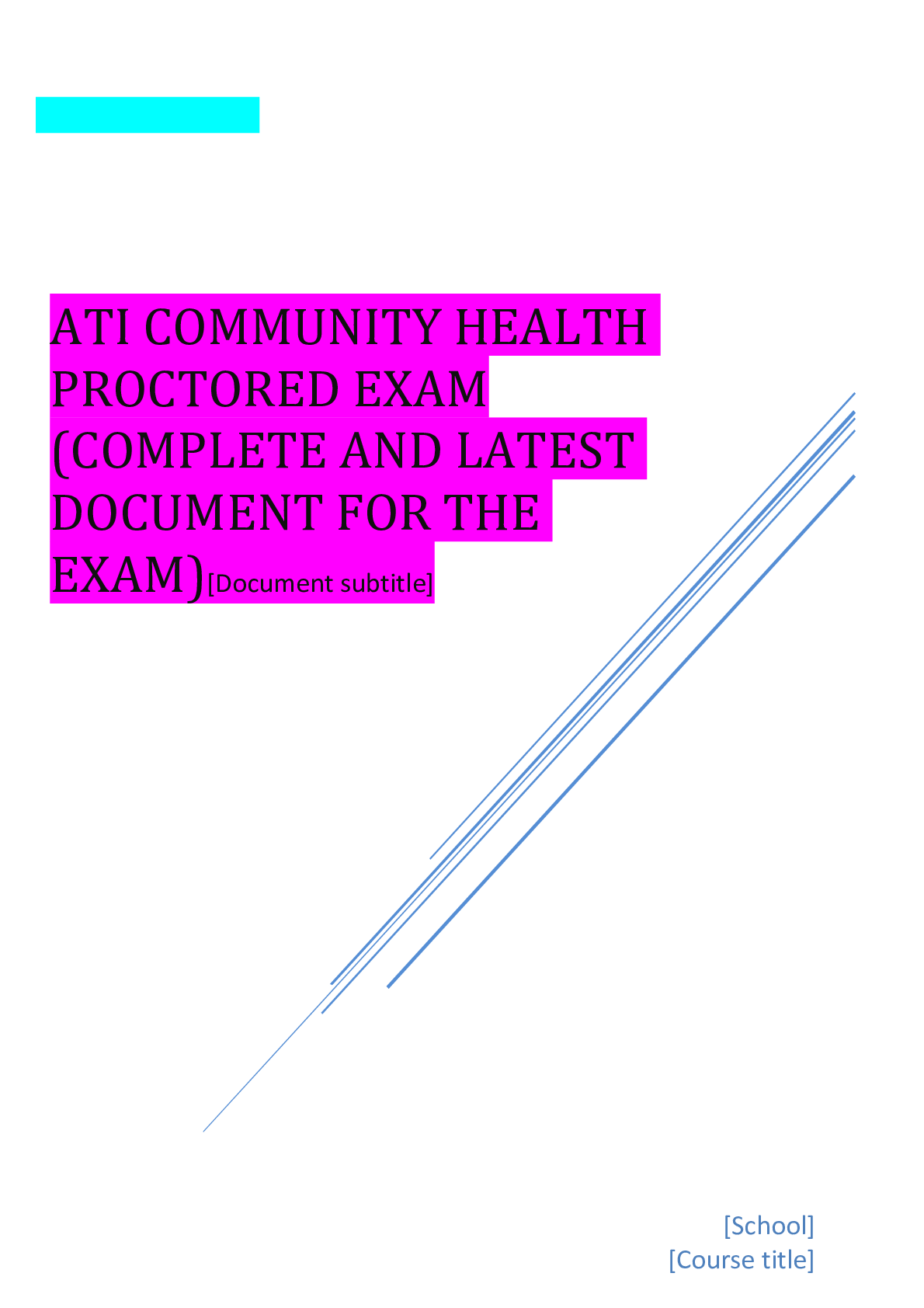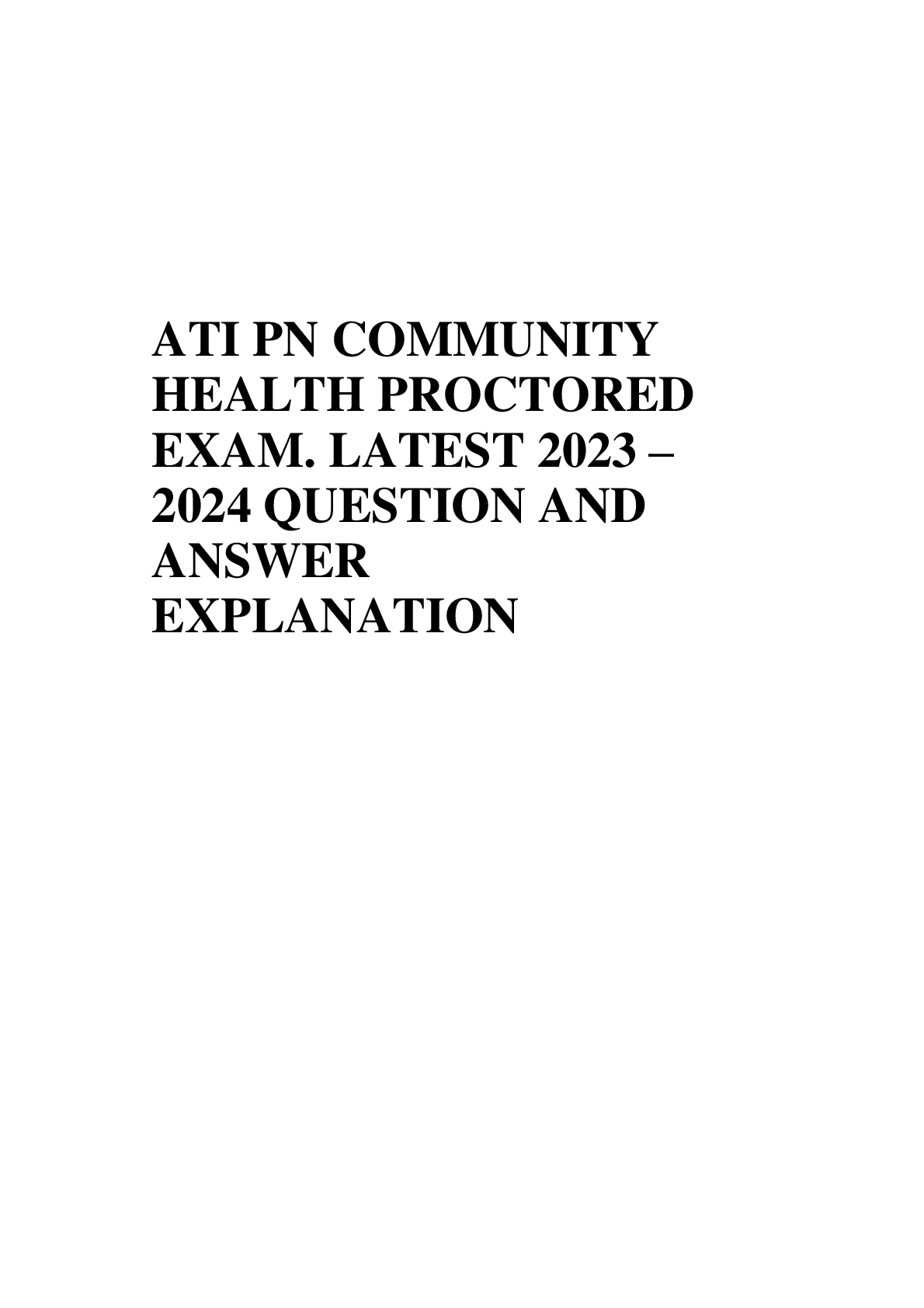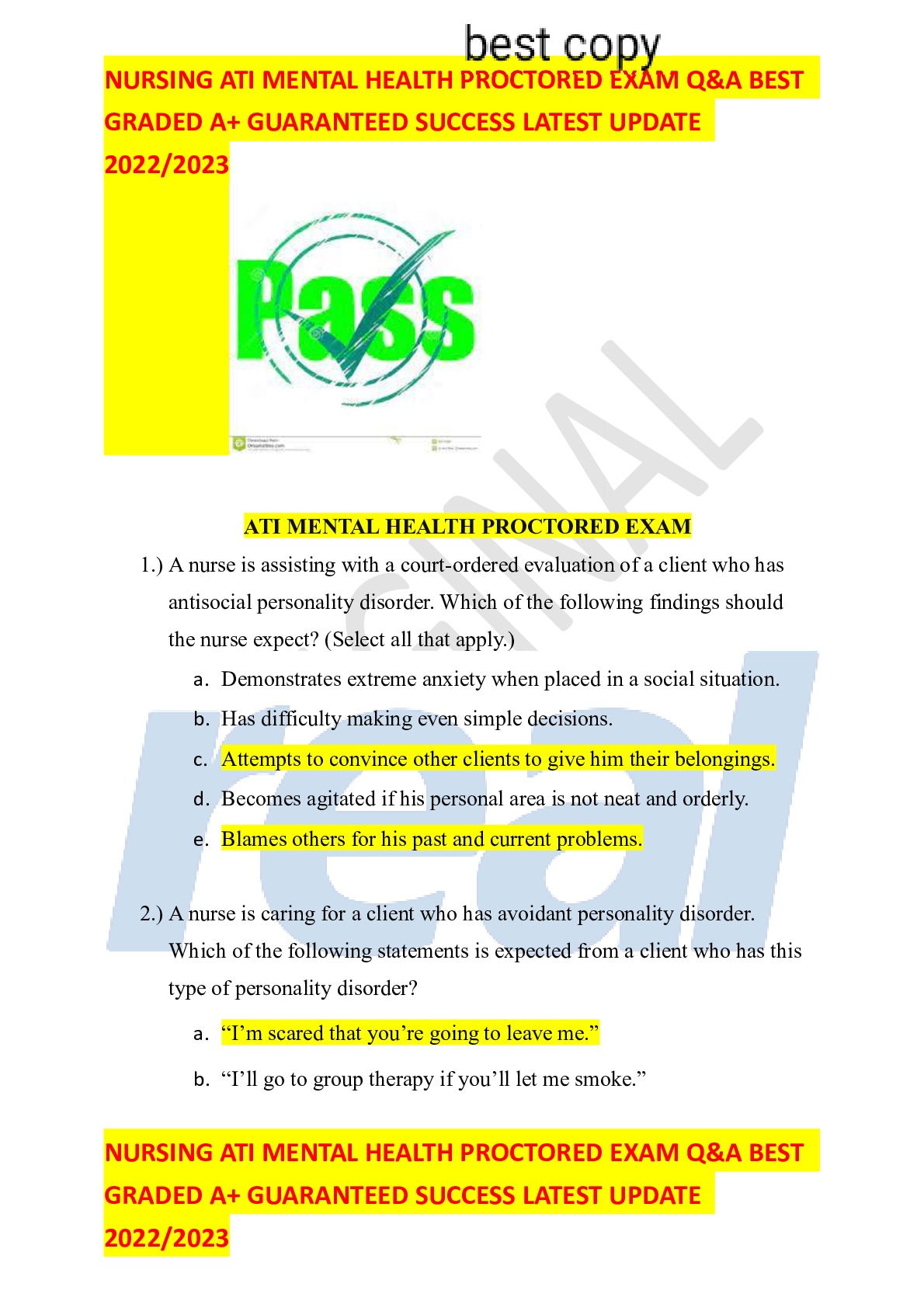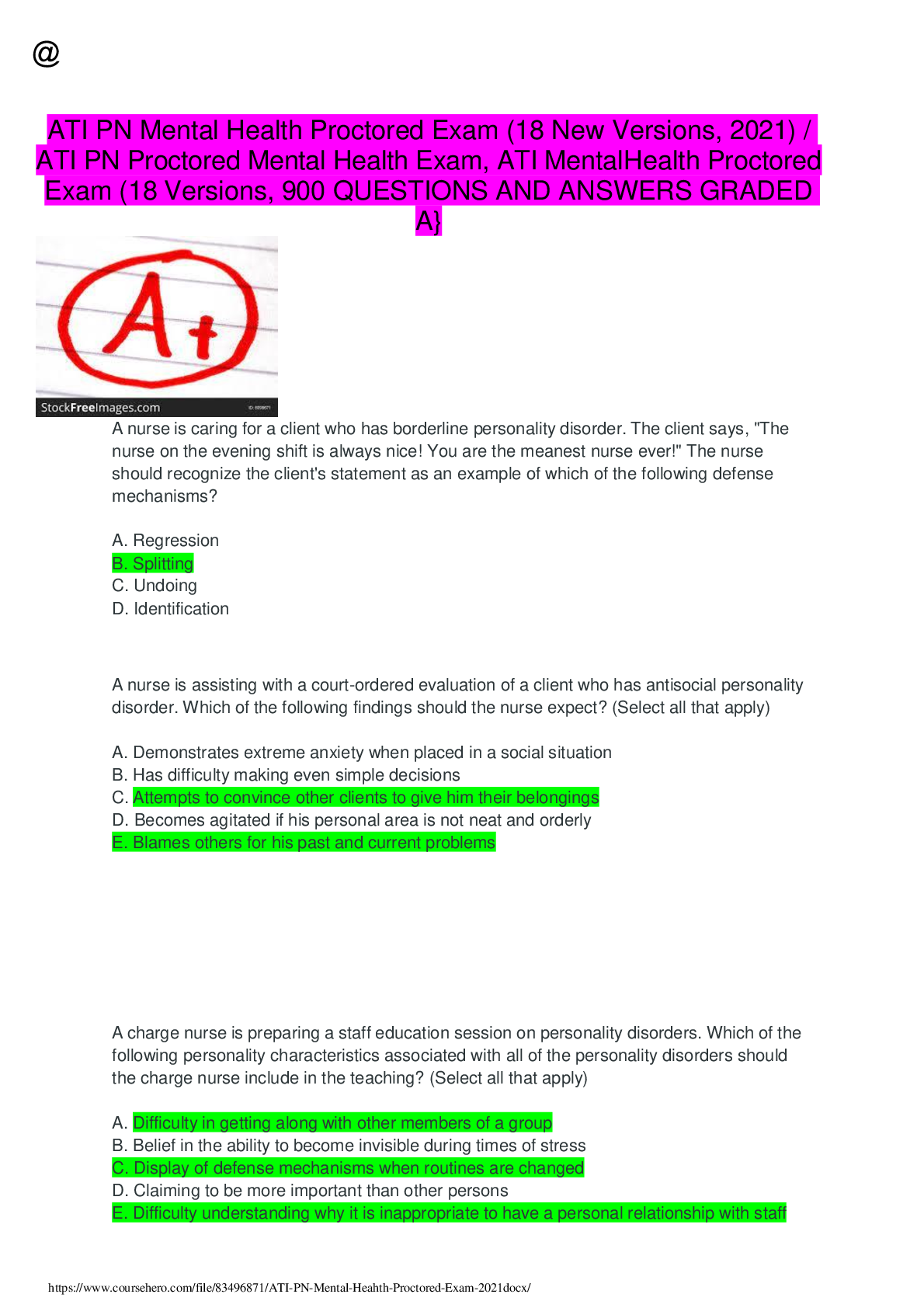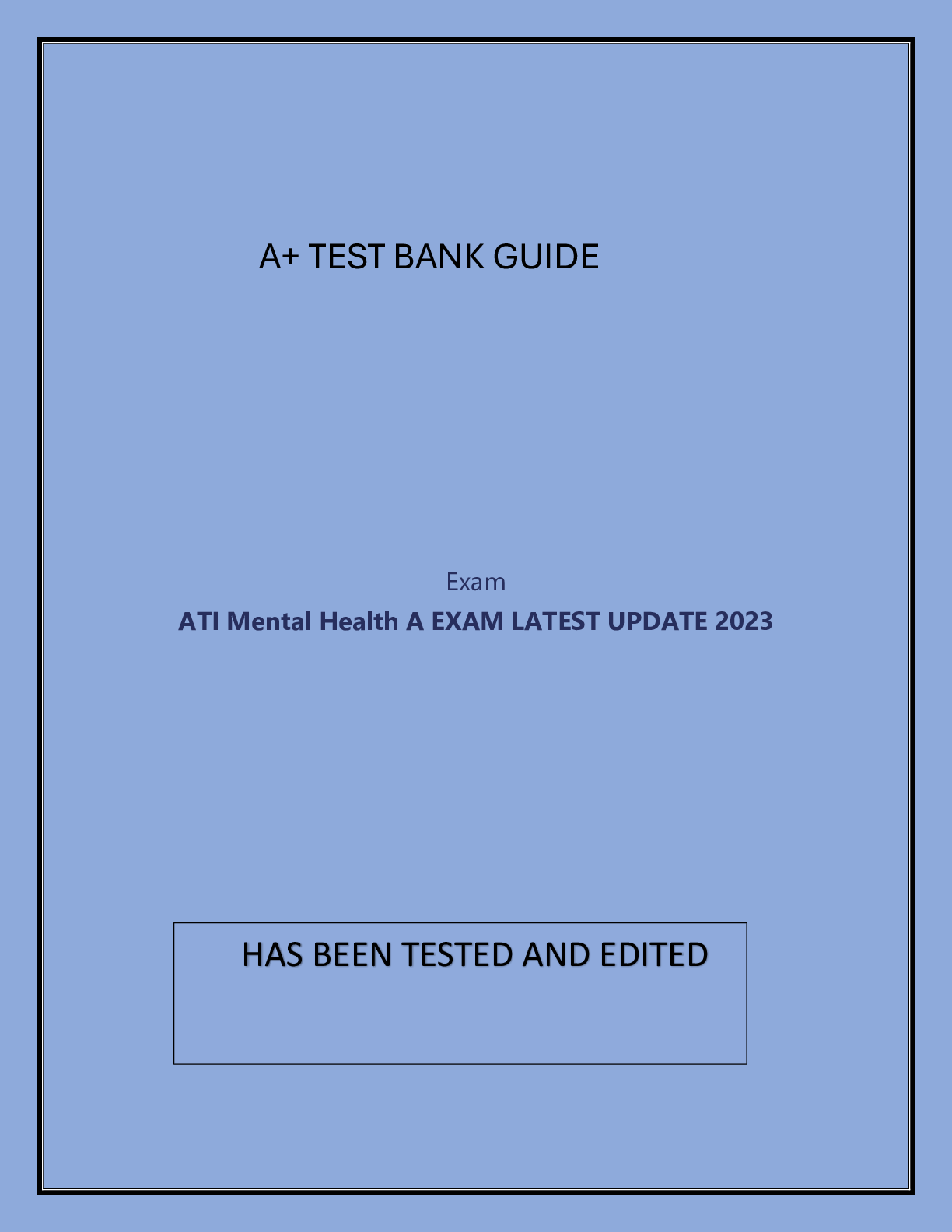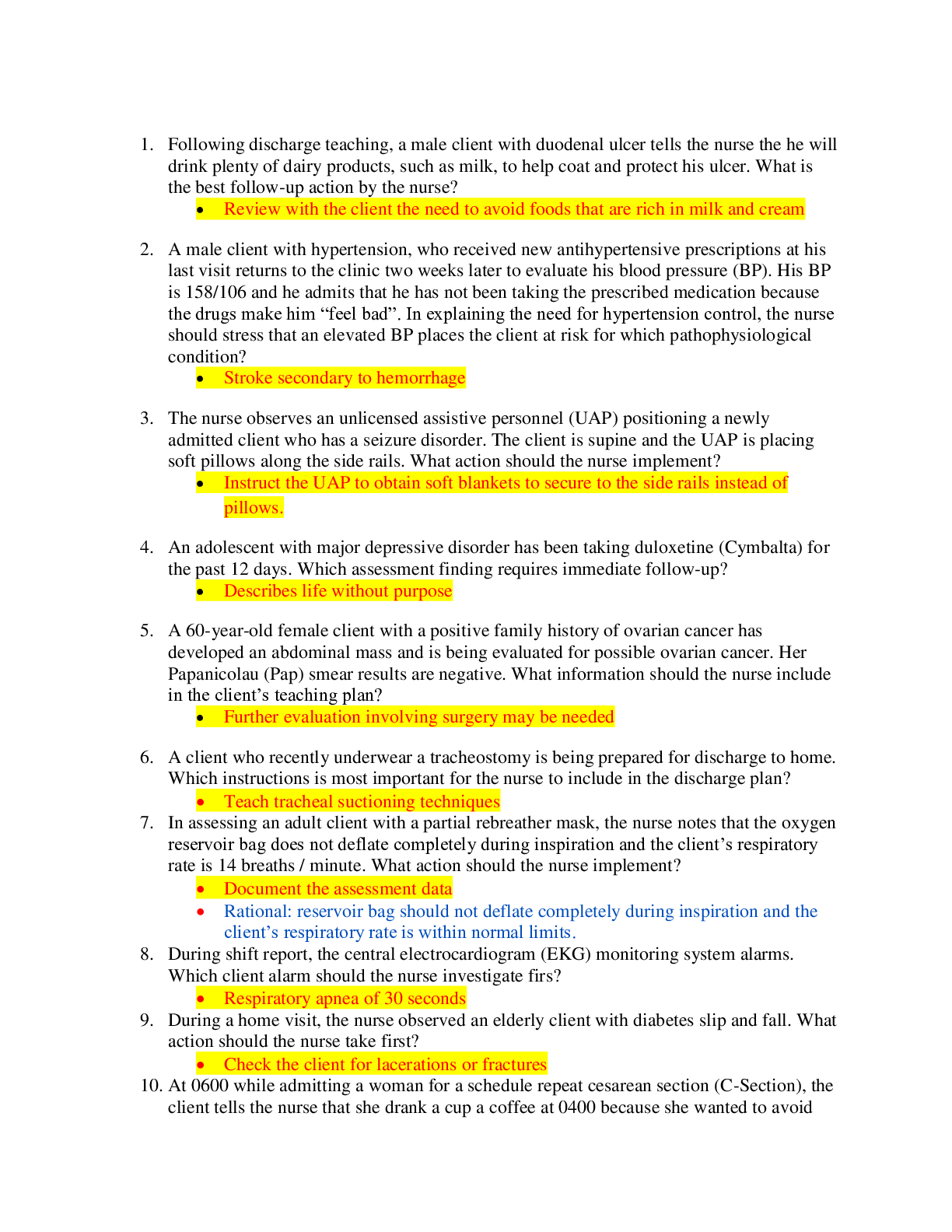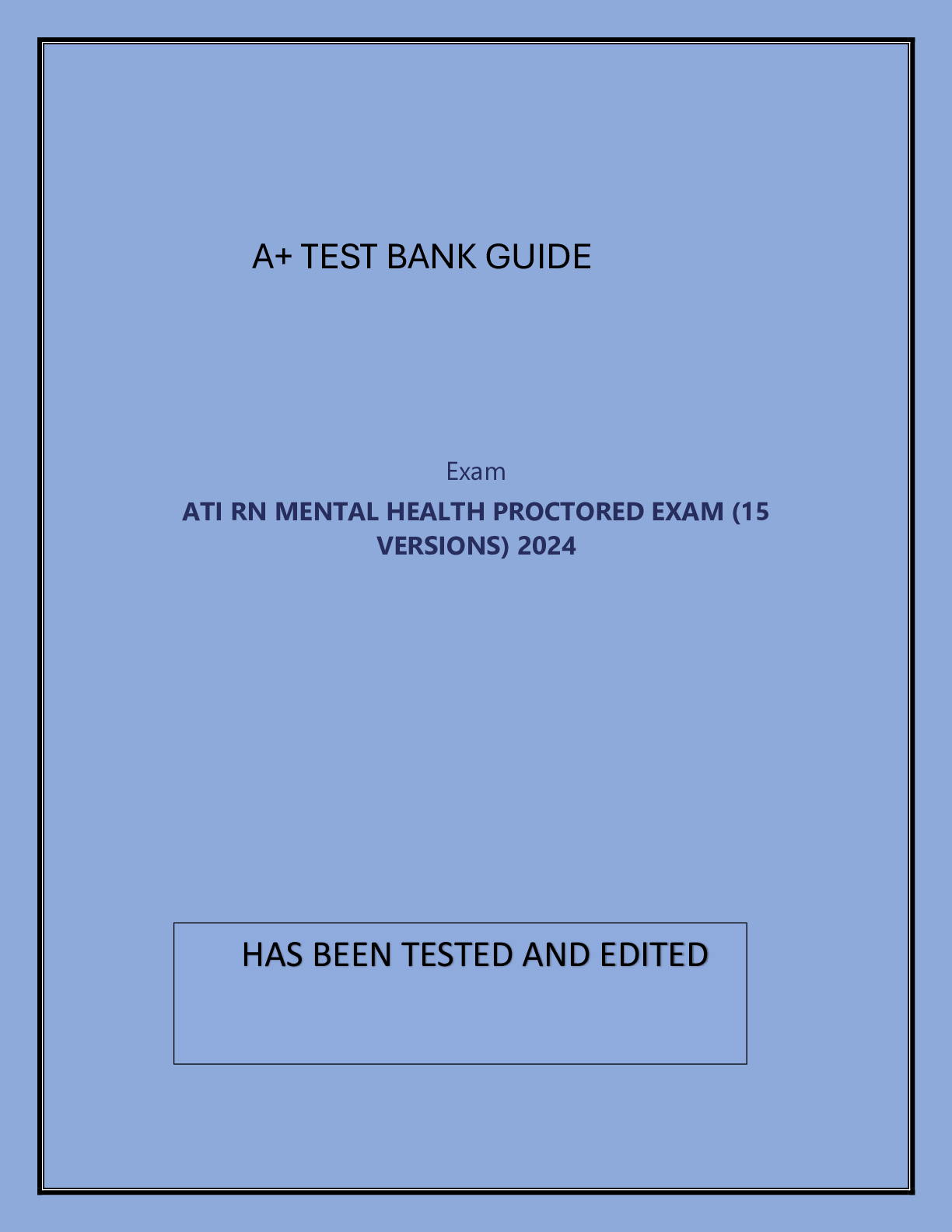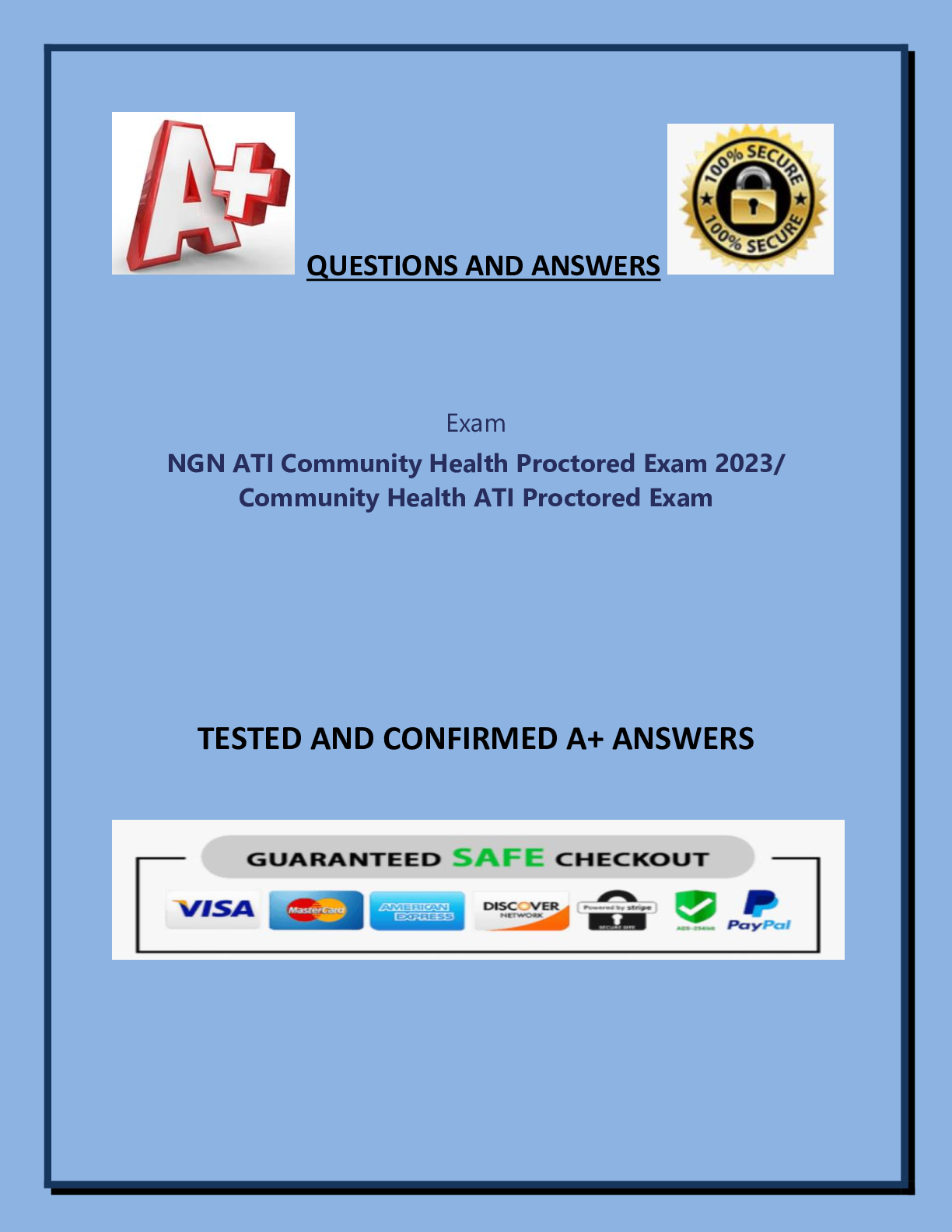*NURSING > A-Level Question Paper > ATI COMMUNITY HEALTH PROCTORED EXAM (All)
ATI COMMUNITY HEALTH PROCTORED EXAM
Document Content and Description Below
ATI COMMUNITY HEALTH PROCTORED EXAM 1. A nurse is teaching patients about health care information. Which patient will the nurse assess closely for health literacy? a. A patient 35 years old b. A... patient 68 years old c. A patient with a college degree d. A patient with a high-school diploma ANS: B About 9 out of 10 people in the United States experience challenges in using health care information. Patients who are especially vulnerable are the elderly (age 65+), immigrants, persons with low incomes, persons who do not have a high-school diploma or GED, and persons with chronic mental and/or physical health conditions. A 35-year-old patient and patients with high- school and college education are not identified in the vulnerable populations. 2. A nurse works at a hospital that uses equity-focused quality improvement. Which strategy is the hospital using? a. Document staff satisfaction. b. Focus on the family. c. Implement change on a grand scale. d. Reduce disparities. ANS: D Organizations can implement equity-focused quality improvement by recognizing disparities and committing to reducing them. Staff diversity is a priority for equity-focused quality improvement, not staff satisfaction. While the family is important, the focus is on the patients. Organizations should start by implementing a change on a small scale (pilot testing), learning from each test, and refining the intervention through performance improvement cycles (e.g., plan, do, study, and act). 1 3. A nurse is providing care to a culturally diverse population. Which action indicates the nurse is successful in the role of providing culturally congruent care? a. Provides care that fits the patient’s valued life patterns and set of meanings b. Provides care that is based on meanings generated by predetermined criteria c. Provides care that makes the nurse the leader in determining what is needed d. Provides care that is the same as the values of the professional health care system ANS: A The goal of transcultural nursing is to provide culturally congruent care, or care that fits the person’s life patterns, values, and system of meaning. Patterns and meanings are generated from people themselves, rather than from predetermined criteria. Discovering patients’ cultural values, beliefs, and practices as they relate to nursing and health care requires you to assume the role of learner (not become the leader) and to partner with your patients and their families to determine what is needed to provide meaningful and beneficial nursing care. Culturally congruent care is sometimes different from the values and meanings of the professional health care system. [Show More]
Last updated: 1 year ago
Preview 1 out of 26 pages
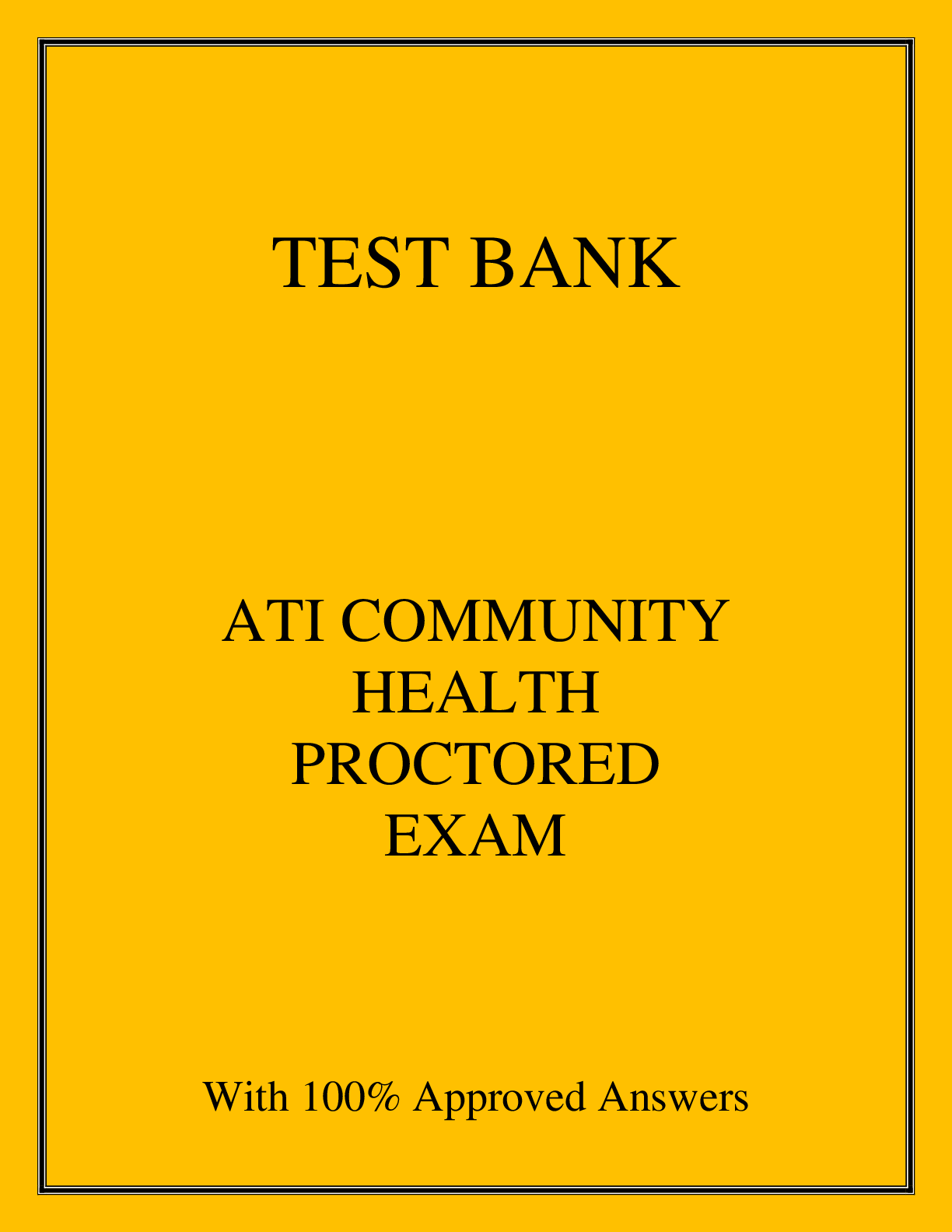
Buy this document to get the full access instantly
Instant Download Access after purchase
Buy NowInstant download
We Accept:

Reviews( 0 )
$19.50
Can't find what you want? Try our AI powered Search
Document information
Connected school, study & course
About the document
Uploaded On
Oct 26, 2023
Number of pages
26
Written in
Additional information
This document has been written for:
Uploaded
Oct 26, 2023
Downloads
0
Views
127

